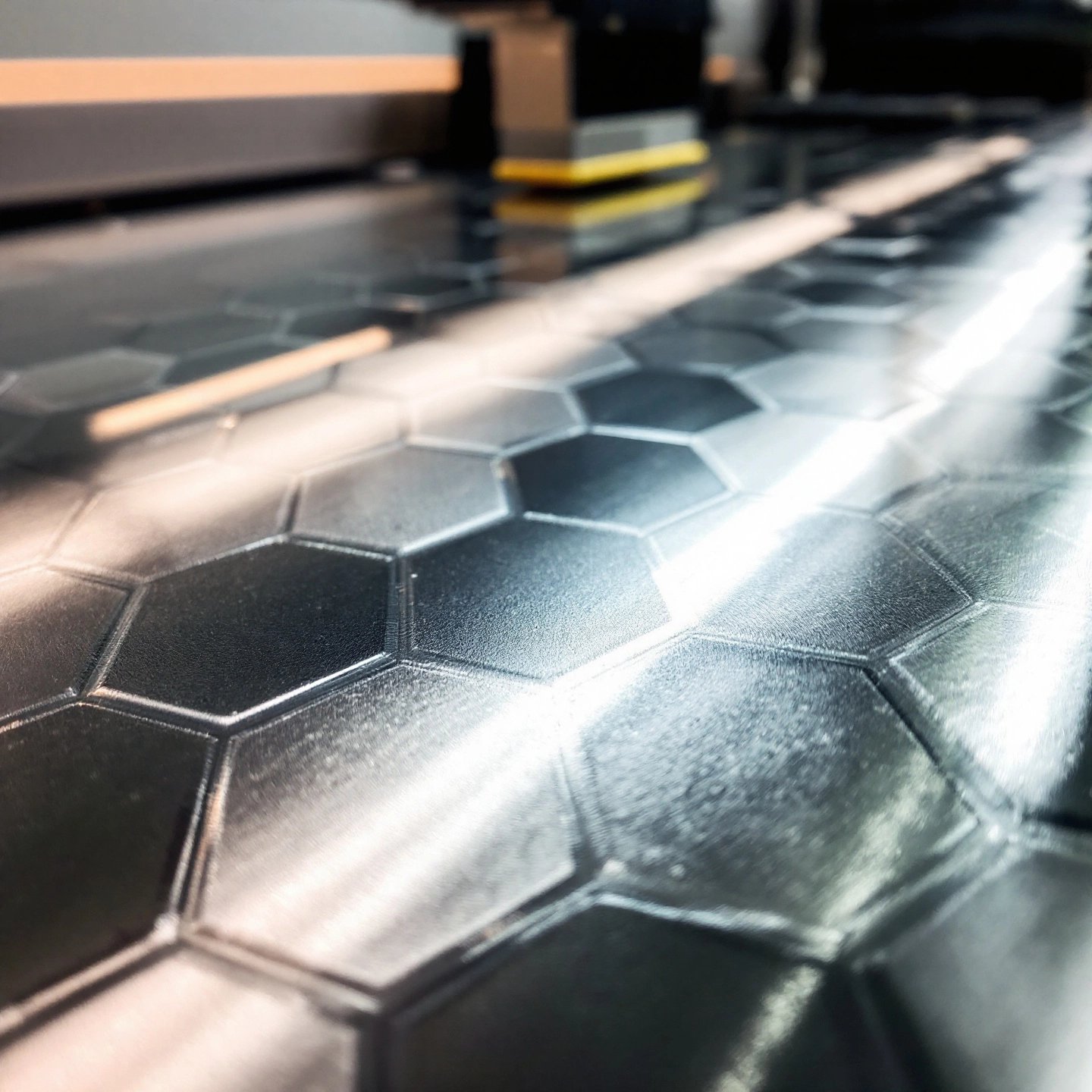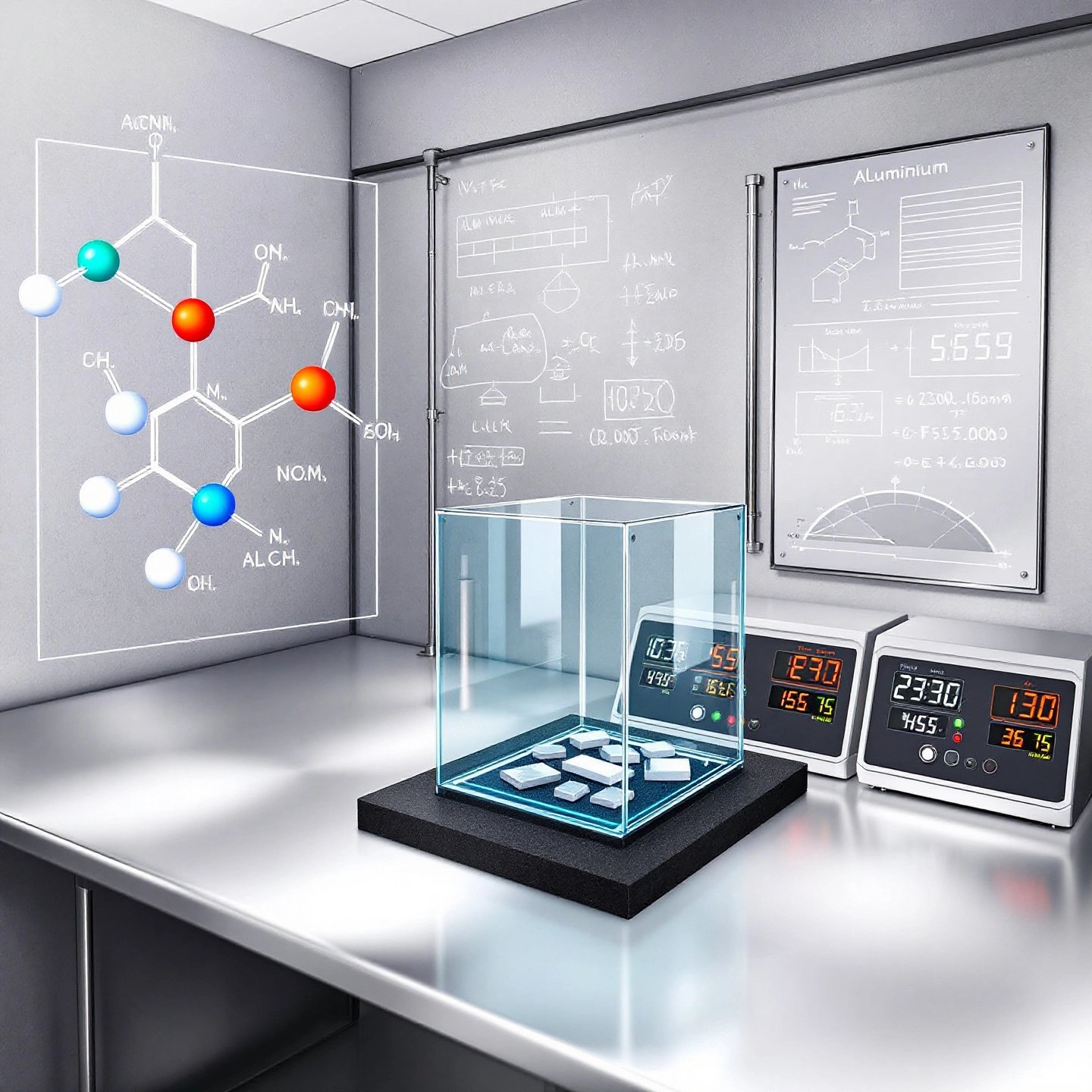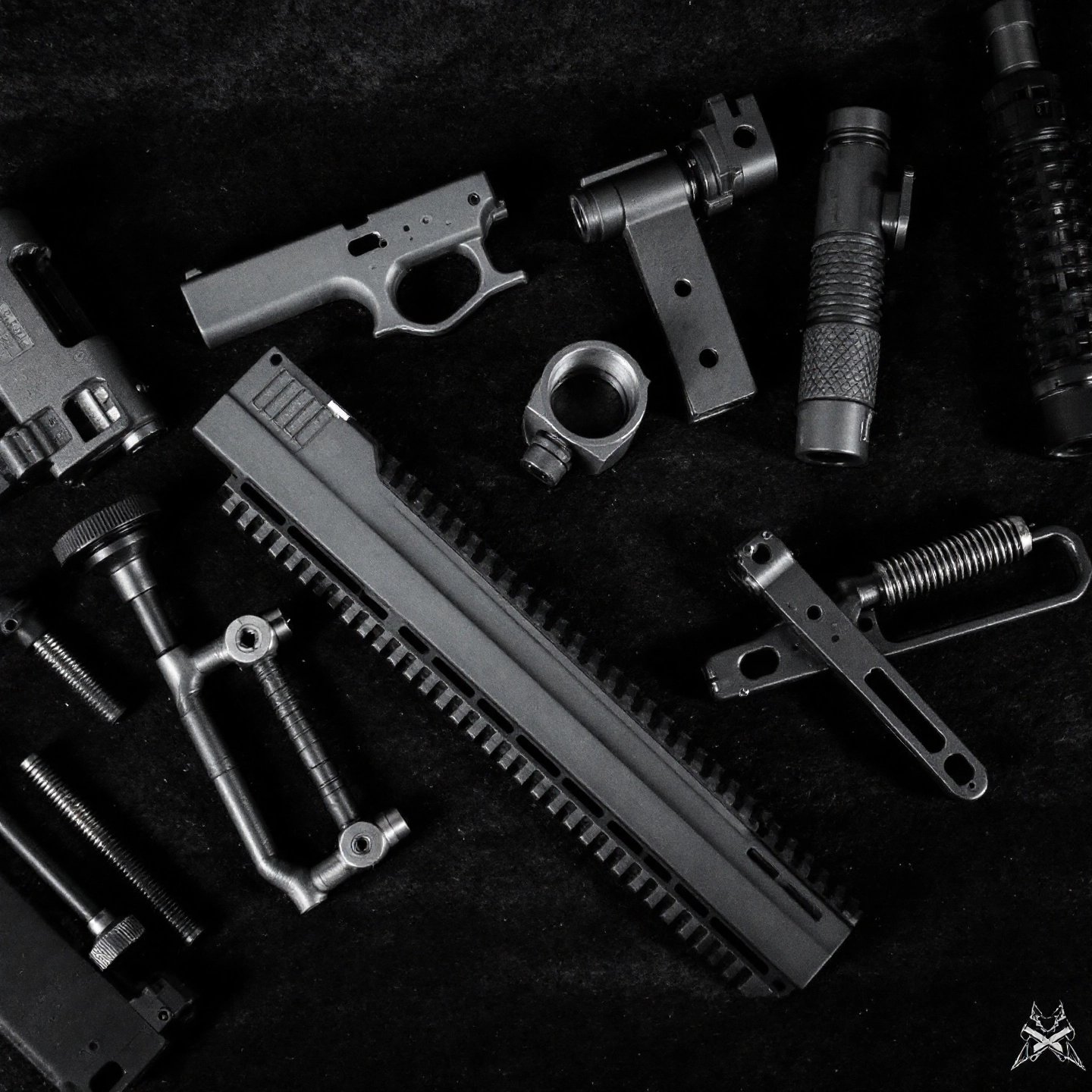
Ever wondered how sleek skyscraper facades maintain their mirror-like finish despite decades of weather exposure? Or why high-end firearms retain crisp machining details while resisting corrosion? The answer lies in clear anodized aluminum – an advanced surface treatment that combines raw metal aesthetics with industrial-grade protection.
This electrochemical process transforms ordinary aluminum into an engineering powerhouse by thickening its natural oxide layer. Unlike paint or powder coating, clear anodizing:
From the curved storefronts of urban high-rises to the heat sinks in your smartphone, clear anodized components deliver unmatched performance. Architects specify it for corrosion-resistant curtain walls that withstand coastal salt spray, while automotive engineers rely on its ability to maintain dimensional accuracy under thermal stress.
Natural aluminum forms a thin passive oxide layer, but clear anodizing amplifies this protection through controlled oxidation. The result? A surface that:
| Property | Raw Aluminum | Clear Anodized |
|---|---|---|
| Surface Hardness | 1-2 Mohs | 8-9 Mohs |
| Salt Spray Resistance | 48 hours | 1,000+ hours |
| UV Stability | Moderate fading | No color shift |
This enhanced durability makes clear anodized aluminum ideal for visible components requiring both beauty and brawn. Consumer electronics manufacturers use it for scratch-resistant laptop chassis, while marine engineers specify it for corrosion-proof boat hardware. Even in extreme environments like spacecraft exteriors, the finish maintains structural integrity where paints would blister and peel.
As we'll explore next, this transformative process begins with precise electrochemical reactions – a marriage of science and engineering that elevates aluminum beyond its elemental capabilities.

How does aluminum transform from a soft, reactive metal into a corrosion-resistant engineering marvel? The answer lies in controlled electrochemical reactions that build protective oxide layers atom by atom. Let's break down the clear anodizing process and explore what makes it fundamentally different from colored alternatives.
Clear anodizing amplifies aluminum's natural oxidation process through precise voltage control and chemical baths. Key stages include:
While black anodized finishes use metallic salts or organic dyes, clear anodizing preserves aluminum's metallic appearance through process control:
| Feature | Clear Anodized | Black Anodized |
|---|---|---|
| Light Reflectance | 85-95% | 5-15% |
| UV Stability | No fading (MIL-A-8625) | Possible dye degradation |
| Surface Structure | Unmodified pores | Dye-filled pores |
This structural difference explains why clear anodized AR-15 receivers maintain zero reflectance for tactical use, while colored versions risk compromising their finish through dye migration under extreme heat.
Recent studies using environmental TEM reveal how the amorphous-crystalline oxide bilayer forms through water vapor interaction at atomic levels. This dual-phase structure gives clear anodized aluminum its unique combination of hardness (8-9 Mohs) and chemical stability up to pH 9.
With the science of oxide formation mastered, manufacturers can now apply these principles across industries - from precision optical instruments requiring unaltered light paths to architectural systems demanding decade-long color consistency. Next, we'll examine how these engineered surfaces perform in real-world applications.

Why do architects specify clear anodized aluminum for coastal skyscrapers, and why do firearms manufacturers choose it for tactical components? The answer lies in its unique combination of durability and adaptability across industries. Let's explore five sectors where this finish delivers exceptional performance.
Modern clear anodized storefront systems demonstrate the finish's weather-resistant capabilities. The process creates surfaces that withstand:
These properties make it ideal for curtain walls in hurricane-prone regions and high-rise window frames maintaining structural integrity for decades.
The clear anodized AR15 receiver set has become the gold standard in tactical firearms. Brands like Aero Precision leverage this finish for:
| Industry | Use Case | Key Benefit |
|---|---|---|
| Aerospace | Fuel system components | Corrosion resistance at altitude |
| Marine | Deck hardware | Saltwater protection |
| Transportation | Metro rail door systems | 30-year service life |
Urban transit systems benefit from clear anodized aluminum's combination of strength and maintenance efficiency. Shengxin Aluminum's metro rail components, used in Beijing Line 19 and Chongqing Line 3, showcase:
From hurricane-resistant building envelopes to spacecraft thermal panels, clear anodized aluminum proves its mettle across industries. Next, we'll examine how proper pre-treatment ensures these exceptional results.
Why do some anodized finishes develop uneven textures or premature corrosion? The answer often lies in pre-treatment - the make-or-break phase determining final product quality. Proper surface preparation removes contaminants and creates the ideal foundation for oxide layer formation.
Industrial-grade clear anodizing demands meticulous surface preparation:
Shengxin Aluminum’s ISO 9001-certified facilities implement rigorous quality checks:
| Test | Method | Acceptance Criteria |
|---|---|---|
| Water Break | ASTM F22 | Continuous film within 40 sec |
| Surface Energy | Dyne Pen Test | ≥38 mN/m |
These protocols ensure components meet MIL-A-8625 specifications for critical applications like metro rail systems and aerospace hardware. With 43 extrusion lines and 100,000-ton annual capacity, Shengxin delivers batch-to-batch consistency even for complex profiles used in Beijing and Chongqing metro projects.
Proper pre-treatment sets the stage for optimal anodizing results. Next, we’ll explore how to maintain these engineered surfaces through their service life.
How do you keep your clear anodized surfaces looking pristine while preserving their protective qualities? The secret lies in using the right techniques and avoiding common pitfalls that degrade the oxide layer. Let's break down proven methods to maintain both appearance and functionality.
| Method | Tools | Frequency |
|---|---|---|
| Routine | pH-neutral soap + soft microfiber | Monthly |
| Heavy Duty | Non-abrasive nylon pads + anodized-safe detergent | Quarterly |
Three critical mistakes accelerate clear coat degradation:
For stubborn contaminants like grease or tree sap, industry studies show isopropyl alcohol (70% concentration) effectively breaks down organic matter without damaging the finish. Always follow with pH-neutral soap rinsing to remove chemical residues.
Pro Tip: Implement biannual inspections using 10x magnification to check for micro-cracks or coating wear. Early detection allows targeted repairs before substrate exposure occurs.

Why are elite firearm manufacturers turning to clear anodized finishes for critical components? The answer lies in its unmatched ability to preserve aluminum's structural integrity while adding tactical advantages. From AR-15 receiver sets to suppressor mounts, this finish delivers military-grade performance through three key attributes:
Leading brands like Aero Precision specify clear anodized finishes for their M4E1 receiver sets, leveraging the process's ability to:
The foundation of these components lies in specialized aluminum alloys:
| Alloy | Temper | Yield Strength |
|---|---|---|
| 7075 | T6 | 73,000 psi |
| 6061 | T7 | 40,000 psi |
Shengxin Aluminum's expertise in T6-T7 tempered aluminum production ensures components withstand cyclic loading while maintaining precise anodized surface geometries. Their 43 extrusion lines produce receiver-ready profiles meeting:
Recent advancements allow Shengxin to anodize complex firearm components up to 8 meters long, maintaining coating uniformity within 5% variance across surfaces - critical for precision optics mounting platforms.
What makes clear anodized aluminum the top choice for modern architects designing energy-efficient structures? The answer lies in its unique combination of form and function, particularly when using 6063-T5 alloy - the gold standard for clear anodized aluminum storefront systems.
This architectural-grade alloy offers ideal properties for curtain walls and anodized window frames:
| Property | 6063-T5 | Benefits for Architecture |
|---|---|---|
| Tensile Strength | 186 MPa | Withstands wind loads up to 150 mph |
| Thermal Conductivity | 209 W/m-K | Reduces energy transfer by 40% vs steel |
| Corrosion Resistance | 1,000+ hrs salt spray | Maintains appearance in coastal environments |
Advanced extrusion capabilities transform these material properties into precision profiles. Shengxin Aluminum's 5500-ton press - the largest in Anhui Province - produces storefront mullions meeting strict ASTM B221 dimensional tolerances of ±0.010" across 30-foot spans.
Modern curtain wall systems leverage clear anodized aluminum's thermal performance through:
Shengxin's architectural profiles feature precisely controlled oxide layers (20-25μm) that withstand UV exposure without the yellowing common to powder coatings. This durability is proven in their metro rail projects across China, where components maintain reflectance values above 85% after decade-long exposure.
For specifiers seeking sustainable solutions, clear anodized aluminum offers:
From Shanghai's glass towers to Berlin's passive housing projects, this finish continues redefining architectural possibilities while meeting increasingly stringent energy codes. Its combination of engineering precision and environmental performance makes clear anodized aluminum the smart choice for tomorrow's landmarks.
How do you ensure your clear anodized components meet industrial demands while maintaining aesthetic integrity? The answer lies in a rigorous supplier evaluation process focused on three critical factors.
| Requirement | Why It Matters | Industry Benchmark |
|---|---|---|
| MIL-A-8625 Compliance | Ensures proper oxide thickness (Class I: >18μm) | Type II sulfuric acid anodizing |
| Salt Spray Test Results | Validates corrosion resistance | 1,000+ hours (ASTM B117) |
| Anodizing Tank Capacity | Determines maximum part size capabilities | 144" x 60" profiles (Price Industries standard) |
Leading manufacturers like Shengxin Aluminum exemplify these standards through:
While clear anodized aluminum specifications define product performance, a supplier's physical capabilities determine project scalability. Shengxin's 100,000-ton annual output supports large-scale contracts like Beijing Metro Line 19, where they delivered 12,000+ anodized components meeting:
Pro Tip: Always review a supplier's material certificates and third-party test reports - Shengxin provides full traceability from billet to finished profile through their ISO 9001-certified processes.
Want your clear anodized surfaces to outlast their expected 30-year service life? The secret lies in a structured maintenance approach that adapts to environmental demands. Follow this 3-tier plan to preserve anodized finish integrity while maximizing anodized aluminum lifespan.
| Avoid | Reason | Safe Alternative |
|---|---|---|
| Acidic cleaners | Etch oxide layer | Neutral pH solutions |
| Pressure washers | Force water into pores | Low-pressure rinse |
Shengxin Aluminum backs their architectural systems with a 20-year warranty - a testament to the finish's durability when properly maintained. Their ISO-certified production facility uses 43 extrusion lines to create components meeting strict MIL-A-8625 specifications, ensuring your preservation efforts start with optimally engineered surfaces.
Pro Tip: For coastal installations, increase monthly cleaning frequency during salt spray seasons. Combine with annual wax applications using paraffin-based protectants to block chloride infiltration.
Why does clear anodized aluminum remain the gold standard for engineers prioritizing sustainability and performance? This electrochemical marvel transforms ordinary metal into an eco-conscious powerhouse through:
As industries push toward net-zero targets, Shengxin Aluminum leads with solutions meeting both environmental and engineering demands. Their ISO-certified facility combines 100,000-ton annual capacity with:
| Capability | Benefit |
|---|---|
| 43 extrusion lines | Complex metro rail profiles up to 8m |
| 5500-ton press | Precision storefront mullions ±0.010" tolerance |
| Closed-loop water systems | 70% reduction in industrial wastewater |
From Beijing Metro's corrosion-resistant door systems to military-grade AR-15 receivers, Shengxin's clear anodized components prove sustainable manufacturing doesn't compromise performance. Their energy-efficient processes align with industry-leading sustainability practices, utilizing renewable power sources and advanced chemical recycling.
For architects specifying curtain walls or engineers developing next-gen transportation systems, Shengxin offers:
Ready to elevate your project? Contact Shengxin's technical team for tailored anodizing solutions balancing precision, durability, and environmental responsibility.
Clear anodizing is an electrochemical process that creates a protective aluminum oxide layer while preserving the metal's natural appearance. Unlike colored anodizing, it maintains 85-95% light reflectance and doesn't use dyes, making it ideal for architectural and tactical applications requiring UV stability.
Clear anodizing maintains aluminum's metallic sheen through pure oxide layer formation, while black anodizing uses dyes that reduce light reflectance to 5-15%. Clear finishes offer superior UV resistance without dye degradation risks, preferred for exterior architectural elements and military hardware.
Use pH-neutral cleaners monthly and non-abrasive pads quarterly. Avoid acidic solutions (pH<5) that degrade the oxide layer. Shengxin Aluminum recommends professional inspections every 3 years for structural components like metro rail systems to ensure 30+ year service life.
Yes, when properly sealed, clear anodizing exceeds 1,000 hours in salt spray tests (ASTM B117). Shengxin's architectural profiles used in Beijing Metro systems demonstrate 20-year corrosion resistance through ISO-certified sealing processes and 20-25μm oxide layers.
Top applications include architectural curtain walls (6063-T5 alloy), aerospace components, marine hardware, and firearms like AR-15 receivers. Shengxin supplies metro rail systems requiring MIL-A-8625 compliance and 8-meter extruded profiles with ±0.005" tolerances.
 Интернет Сервис
Интернет Сервис 0086 136 3563 2360
0086 136 3563 2360 sales@sxalu.com
sales@sxalu.com +86 136 3563 2360
+86 136 3563 2360